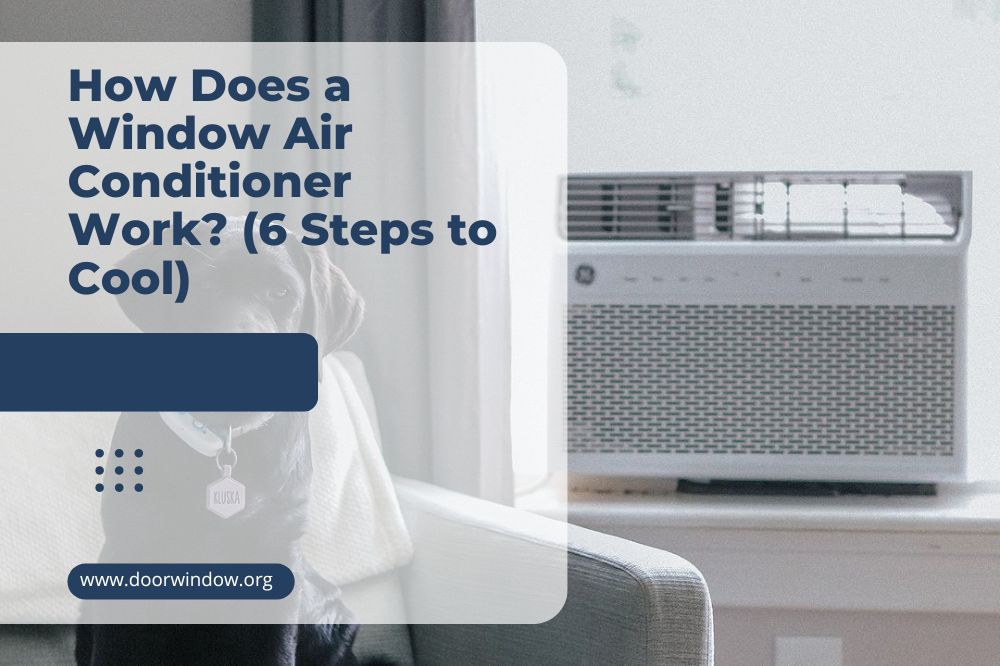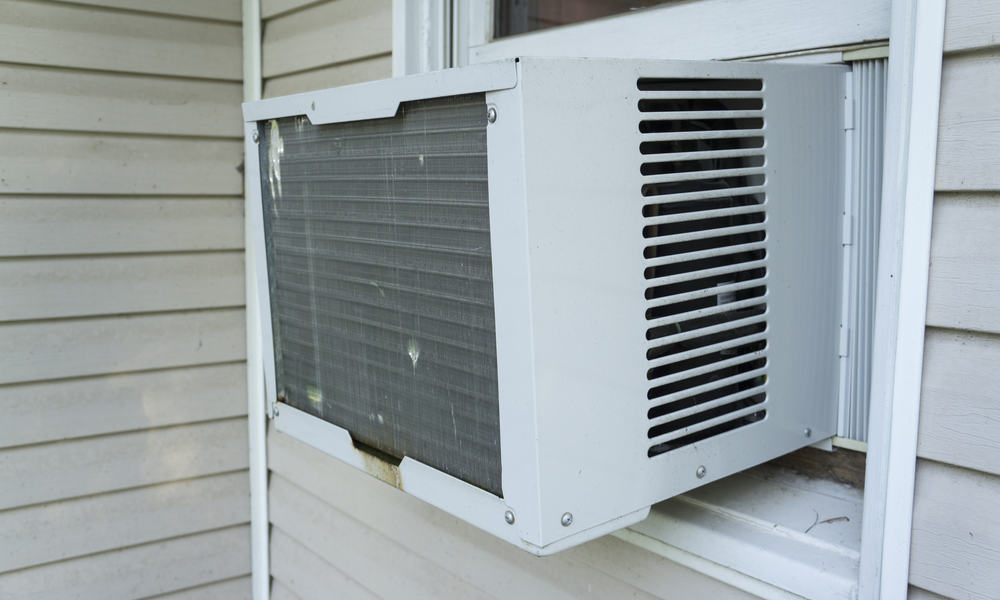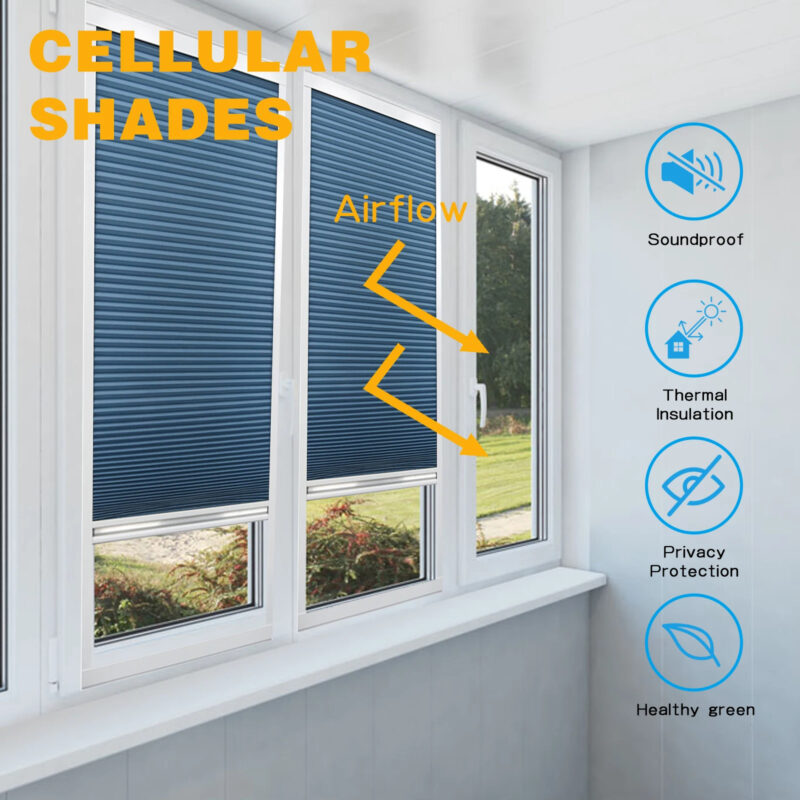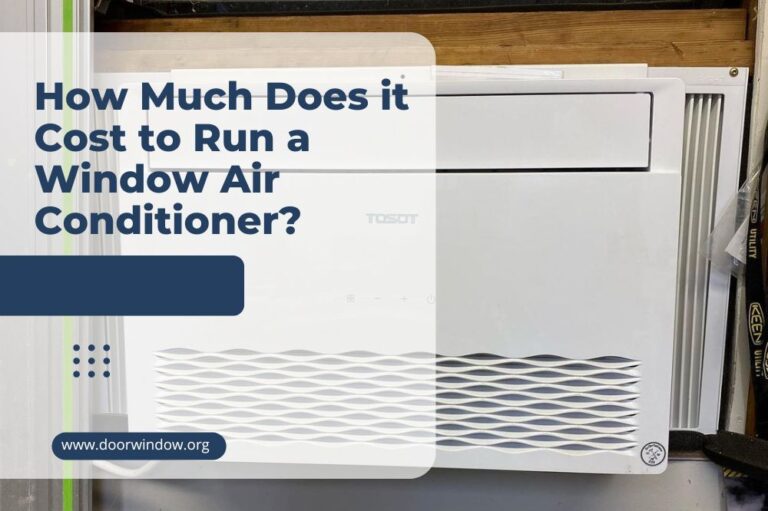How does a Window Air Conditioner Work? (6 Steps to Cool)

At a time when the global temperatures continue to rise at unprecedented rates, more and more people are using window air conditioners to cool their indoors. These devices consume less energy than their predecessors from yesteryears and provide better cooling than split ACs.
Have doubts about the first claim? Still believe in the age-old assertion that the window ACs consume enough power to take your monthly electricity bill through the roof? In that case, you must know how does a window air conditioner work. Only then your misgivings about them will be removed.
Parts of a Window Air Conditioner
To understand the working of a window AC, it’s essential for you to first know about its parts. As it’s the very parts that play a crucial role in its functioning.
With this in mind, let’s look at the basic mechanical parts of an air conditioning system alongside the functions that they perform:
- Compressor: Also known as the heart of an air conditioner, its compressor is responsible for moving the refrigerant between the evaporator coil and condenser coil.
- Fan and Blower: The fan and blower inside an air conditioner perform different functions. While the former sucks in hot air from the room and rejects it into the external environment, the blower circulates hot air over the evaporator to cool it before exhaling the chilled air into your room.
- Condenser coils: It is responsible for bringing down the temperature of the hot air which the fan/blower has sucked in from the room.
- Evaporator coils: The evaporator coil uses a substance to remove heat and humidity from the air sucked in from your room by the fan.
- Chemical refrigerant: The substance that the evaporator coil uses to remove heat and humidity from your indoor air is chemical refrigerant.
- Filter: As you might guess, the hot air that the air conditioner sucks in from your room contains dust particles. It is the responsibility of the filter to remove those particles.
- Thermostat: The regulator mounted on the room-facing side of your windows air conditioner – using which you control the temperature and flow rate of cold air – is its thermostat.
- Expansion valve: Located between the evaporator coils and the condenser coils, the expansion valve works on the principle of throttling to bring down air temperature.
How does a Window Air Conditioner Work?
Here’s how a window AC works:
Step 1
Once you turn on the air conditioner, it draws air from inside the room using its built-in fan. This air is drawn in through the air inlet grille and is passed through a filter to remove airborne particles.
Step 2
Apart from sucking air, the air conditioner, on turning on, initiates the refrigeration process within itself. This process involves the refrigerant first taking on and then releasing heat.
As the refrigerant does that, it is first converted from a hot liquid to a gas and back to a cold liquid. The temperature of the final liquid is extremely low as compared to the temperature of the refrigerant that previously law dormant.
Step 3
In the extension of the refrigeration cycle, the cold refrigerant starts flowing through the air conditioner’s indoor coil. As the refrigerant is flowing through the coils, the hot air that the ac sucked in the first step is passed over the coils.
This coming together of the hot air and the cold refrigerant results in the decrease in the temperature of the air and the rise in the temperature of the refrigerant.
Step 4
Once the refrigerant’s temperature rises, it is converted into vapor. This vapor is then pushed through a compressor which raises its pressure and nudges it towards the condenser coil.
As it enters the condenser coil, the vapor undergoes the process of condensation, loses its heat that is expelled outside, and gets converted into a liquid. So completes the refrigeration cycle initiated in step number two.
Step 5
In this step, the cold refrigerant is passed through the expansion valve. This valve operates on the principle of throttling – a process which decreases the pressure of a high-speed liquid by passing it through an extremely narrow pathway before emitting it into a relatively open space.
As that process takes place, the temperature of the liquid further drops. This liquid then returns to the evaporator coil where it comes in contact with the air that is about to be released into the room.
Step 6
As the moderately hot air comes into contact with the extremely cold liquid, its temperature naturally nosedives. This air is then pushed past the cold coil and emitted back into your room to bring down the temperature of your indoors.
How to increase the efficiency of your window air conditioner?
Experts give us the following tips acting on which we can make our window ACs work better:
- Regularly clean the filters: Since cleaning the filters is an extremely easy job, most of us forget to do it on a regular basis. We shouldn’t let this happen as the filter traps particles like pollen, dust and dirt which, if not removed, might affect the air conditioner’s efficiency.
- Clean the coils: Apart from moving the cool air in and hot air out, the air conditioner’s coils attract dirt and dust particles as well. You can use an old toothbrush to remove embedded dirt and a damp cloth to remove the debris visible on their surface.
- Level it off: If your window air conditioner isn’t level, it might prevent its condensation from draining properly out of its back, thereby affecting its efficiency.
Conclusion
Inexpensive and easy to install, window air conditioners are one of the best options for cooling individual rooms.
Their starting prices are extremely low when compared with split or central air conditioning units, and they are also able to keep your room cool for longer periods.
Please get in touch if you’re still confused about their working.











